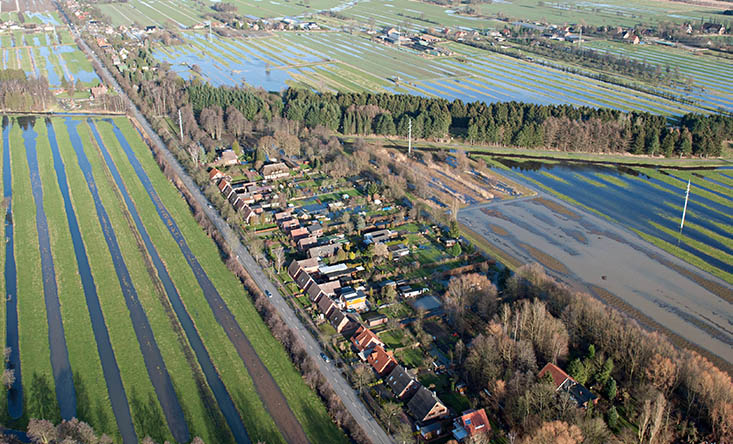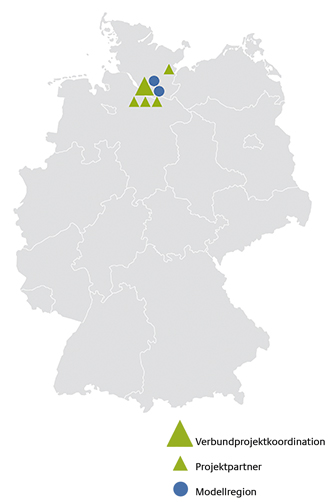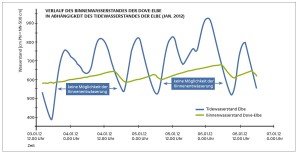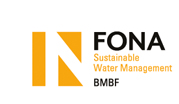StucK
Safeguarding drainage in coastal urban areas while factoring in climate change



©www.aufwind-luftbilder.de
FORWARD-LOOKING WATER MANAGEMENT IN COASTAL CITIES
In urban rivers near coasts, backwater often compromises runoff – with a negative impact on inland drainage. Backwater can have several causes: either directly, via the influence of the tide when drainage can not take place during floods, or indirectly, through the regulation of inland water levels in low-lying areas which can lead to backwater in the river’s upper course. For example, this kind of backwater occurs in Hamburg when tributaries drain into the Elbe. For the affected cities, inland flooding caused by heavy rainfall and accompanied by high tidal levels poses a serious problem. In future, this trend may be further compounded by climate change.
Therefore, the joint project StucK will focus on analysing the hydrological interrelationships of these events and their impact, and will include the development of river management strategies. Within the framework of the project, a chain of information stretching from small-scale forecasts to optimised urban drainage is to be methodically developed and put into practice. In addition to hydrological factors, ecological and economic consequences will also be studied and evaluated. The insights from planning and management activities are to be integrated into the work of the state-run ‘Agency of Roads, Bridges and Water’ operations in Hamburg in order to support management practices over the long term.
GOALS
The goal of StucK is to develop multi-sectoral, sustainable, and universally valid solutions for water management of coastal urban rivers. Other goals are:
- Deepening understanding of the hydrological and hydrodynamic processes which take place when elevated tidal levels and inlandflood events occur simultaneously, while taking the hydrodynamics of urban drainage systems into special consideration
- Optimising the assessment of pumping stations and dyke sluices, while taking into account local drainage and tidal conditions
- Improving the managementof weirs, dyke sluices, pumping stations and their pumps, while factoring in flood protection-, ecological and economic aspects
- Developing recommendations for the management of urban coastal rivers

History of the internal water level of the Dove-Elbe depending on the tide level prior Elbe (January 2012)
MODEL REGIONS
Two model regions near the Hamburg metropolitan area will be studied. One of them is the Dove-Elbe catchment, whose inland drainage is directly impacted by the external water levels of the tidal Elbe. The second model region is the Kollau catchment, where the tidal Elbe has only little impact.
Key messages for practical application
- An enhanced short-term and small-scale precipitation forecast, combined from radar measurements and model simulations (COSMO-DE-EPS), enables the running of an operational runoff forecast model for urban regions. Its results make Hamburg’s warning service for inland flooding more precise, thus extending the room for manoeuver/response times in the case of a flood.
- Ecological flood protection concept for Hamburg: A targeted management of the flood retention basins enables an optimisation of flood protection, while at the same time exploiting the greatest possible ecological potential of the open spaces and creating ecologically valuable habitats.
- A procedure for the analysis of damage potential was developed. This enables the evaluation of different scenarios with a view to potential damage avoidance. The results can also be used to communicate with and sensitise the population.
Further Information
Kontakt
-
Freie und Hansestadt Hamburg - Landesbetrieb Straßen, Brücken und Gewässer
Prof. Dr. rer. nat. Gabriele Gönnert
T: +49 40 42826 2510
M: gabriele.goennert@lsbg.hamburg.de -
Dr. Heiko Westphal
T: +49 40 42826 2251
M: heiko.westphal@lsbg.hamburg.de


 Deutsch
Deutsch




